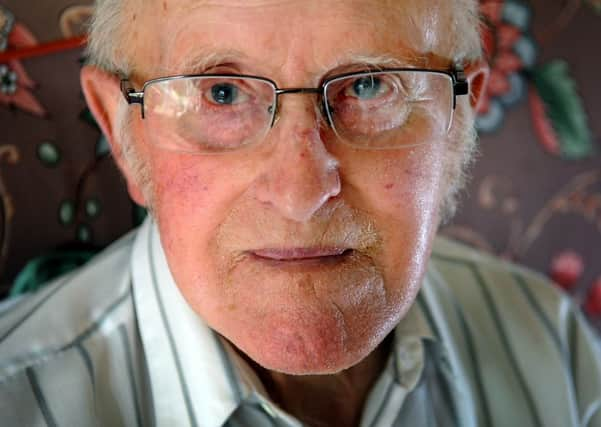The band of brothers who took a step into the unknown


Norman Dewhirst was one of the first to arrive in Normandy for what would go down in history as one of the most significant battles of the Second World War.
Now 90, he vividly recollects that fateful day which turned out to be a turning point for the Allied war effort. He’d joined the Royal Navy aged just 19 in 1942 and was trained as a telegraphist, relaying crucial information back and forth between commanders and soldiers on the ground.
Advertisement
Hide AdAdvertisement
Hide Ad“It was 6am and not yet light and we were all waiting in the ships and boats off shore,” he told the Yorkshire Post. “The whole thing hinged on timing. The paratroopers had been sent in a few days before and there had been heavy shelling of the shore in the run up to the landings.
“My job was to relay messages in Morse code. When they fired the shells, they would get feedback from the Army people on the ground as to where it landed and they would make corrections for the next shot.”
Norman was not confined to the ship and boarded a landing craft to storm up the beach. He said: “None of us knew what to expect but we were young, the fear went away and you just got on and did what you had to do.
“There were all sorts of sounds going off from the artillery, the shelling. I went into the water with my full kit on, a telegraph machine on my back and my gun. It was deep, but nothing we couldn’t cope with.
Advertisement
Hide AdAdvertisement
Hide Ad“We made our way up the beach and I remember seeing one dead German down there but no-one else. By the time we got there, a lot of others had gone before us.”
Norman had trained extensively for the water landings at various lochs in Scotland and so was prepared for jumping from the ship into water. After making their way up the beach together with other troops, he then had to find somewhere to set up base.
“There was a farmhouse and I remember seeing a picture of Hitler on the wall, it had been abandoned by the Germans and we took it over, it became our HQ.”
Norman married wife June, now 81, after the war and they had one son - he became an engineer at Croft’s, Bradford - later Reynold’s - from where he retired aged 62. He added: “It was an important battle because people can live the life they want today rather than being told to live one by someone else. We just got on with it, that was just the way it was.”
Advertisement
Hide AdAdvertisement
Hide AdAmong Norman’s mementos is a card issued to troops from US President Dwight Eisenhower, a rallying call to arms for the war.
It reads: “The eyes of the world are upon you, the hopes and prayers of liberty loving people everywhere march with you... I have full confidence in your courage, devotion and duty and skill in battle...Good luck and let us all beseech the blessing of Almighty God upon this great and noble undertaking”.
Another Leeds sailor who took part was the late Dennis Bickerdike, whose widow Margery, 81, related his story: “My husband didn’t want to go in the Army, so he and his friends went in the Navy. I lost him six years ago, he was 82. He never talked about D-Day, but I found newspaper clipping in drawer after he died. Along with a number of Canadian servicemen, Dennis was on a landing craft which was among the first to strike out for the beaches of Normandy, but his involvement in the offensive was cut short.
The clipping Margery discovered says: “A B Dennis Bickerdike, of East Park Street, Leeds went on a landing craft with the first wave of Canadian troops before 9am on D-Day.
Advertisement
Hide AdAdvertisement
Hide Ad“By 10pm on the same day he was back in England and reached Leeds the following Saturday - he was one of the first to return home in Leeds. His landing barge was sunk and he was in the water for hours before being picked up.”